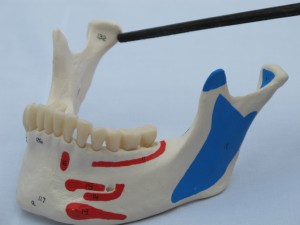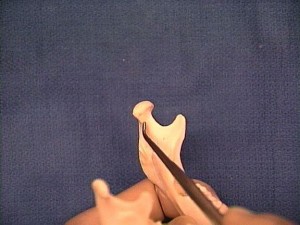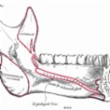What is Pterygoid fovea?
The pterygoid fovea (occasionally called pit or depression) is a concave surface on the uppermost medial (anteromedial) side of the ramus, which is the posterior section of the mandible that is somewhat vertical. The structure is rough and shallow in appearance.
The structure is often mistaken for the Pterygoid fossa of the sphenoid bone.
Pterygoid fovea Names
It is also known by various other names like
- Fovea pterygoidea
- Pterygoid depression
- Pterygoid pit
In Latin, it is known as “Fovea pterygoidea”. The French term for this structure is “Fossette ptérygoïdienne”.
Pterygoid fovea Etymology
The name of this physical structure comes from the fusion of two Greek and Latin terms. The word “Pterygoid” originates from the Greek term “pteryx” standing for “wing” while “eidos” signifies “shape”. Fovea has a Latin origin and is derived from the verb “Fodere” meaning “to dig”.
Picture 1 – Pterygoid fovea
Pterygoid fovea Location
This depression is situated in a position below the condyloid process and behind the mandibular notch.
Pterygoid fovea Function
It forms an attachment or bridge for the tendon of insertion of the muscle referred to as “Lateral pterygoid”. It marks the point of attachment of the inferior center of the lateral pterygoid muscle.
Pterygoid fovea Images
Here are some useful Pterygoid fovea pictures that will help you know how this structure looks like. Check out these Pterygoid fovea photos and learn about its appearance.
Picture 2 – Pterygoid fovea Image
Picture 3 – Pterygoid fovea Photo
References:
http://www.rightdiagnosis.com/medical/pterygoid_fovea.htm
http://www.anatomyexpert.com/structure_detail/704/1599/
http://radiopaedia.org/images/21547
http://www.medilexicon.com/medicaldictionary.php?t=35224




No comments yet.